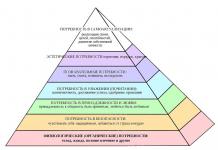Question: Are the total area of a two-level six-room apartment taken into account the area occupied by the internal staircase, the floor area under the flight of this staircase, as well as the area of the opening in the ceiling of the next floor above the staircase?
Answer: According to clause 3.36 of the Instructions on accounting for the housing stock in the Russian Federation, approved by Order of the Ministry of Land Construction of Russia dated 08/04/1998 N 37 (hereinafter referred to as the Instructions), the area of an apartment in a residential building is determined as the sum of the areas of living rooms and utility rooms excluding loggias and balconies , verandas, terraces and cold storage rooms, vestibules. Utility rooms include areas of kitchens, corridors, baths, toilets, built-in closets, storage rooms, as well as the area occupied by the internal staircase.
The total area of the apartment is determined as the sum of the areas of its premises, built-in wardrobes, as well as the areas of loggias, balconies, verandas, terraces and cold storage rooms, calculated with the following reduction factors: for loggias - 0.5, for balconies and terraces - 0.3, for verandas and cold storage rooms - 1.0 (clause 3.37 of the Instructions).
Clause 3.39 of the Instructions establishes that when determining the area of premises, the following must be done:
- the area of niches with a height of 2.0 m or more should be included in the area of the premises in which they are located. The area of arched openings is included in the area of the room, starting from a width of 2 m;
- the area of the floor under the flight of internal stairs with a height from the floor to the bottom of the protruding structures of the flight is 1.6 m or more to be included in the area of the room in which the stairs are located;
- the area occupied by protruding structural elements and heating stoves, as well as located within the doorway, should not be included in the area of the premises.
In addition, clause 1 of the Letter of the Gosstroy of Russia dated April 29, 2002 N NM-2243/19 “On the procedure for applying the Instructions on the accounting of housing stock in the Russian Federation” provides an explanation of the procedure for calculating the area of an apartment with an internal staircase.
In accordance with these clarifications, the floor area under the flight of an internal staircase, if the height from the floor to the bottom of the protruding structures of the flight is 1.6 m or more, is included in the area of the room in which the staircase is located. The remaining area under the flight of internal stairs is included in the total area of the apartment as a utility area. The area of the opening in the ceiling of the next floor above the stairs is not taken into account in the area of the apartment. The area of the flight of internal stairs (the width of the flight multiplied by its length) and intermediate landings is calculated, but is not included in the total area of the apartment, and is indicated in the explication after the total area of the apartment. The area of staircases located at the level of the corresponding floor is included in the total area of the apartment.
Thus, the area of the flight of internal stairs (the width of the flight multiplied by its length) and intermediate landings is calculated, but is not included in the total area of the two-level six-room apartment (in the explication it is indicated after the total area of the apartment).
Floor area under the flight of internal stairs:
- if the height from the floor to the bottom of the protruding flight structures is 1.6 m or more, it is included in the area of the room in which the staircase is located;
- if the height from the floor to the bottom of the protruding structures of the flight is less than 1.6 m, it is included in the total area of the apartment as the area of the utility room.
The area of the opening in the ceiling of the next floor above the stairs is not included in the area of the apartment.
E.N.Yurova
State Referent
civil service of the Russian Federation
2 classes
01.07.2009
Let's consider what is included in the living area of the apartment. This is the sum of the areas of living rooms that were allocated as such when designing the building. Not everyone knows how to calculate it themselves and correctly in order to avoid overpayment.
How different concepts
To understand the difference between a residential zone and a general one, you need to understand what the area of the room as a whole is. It is usually called the totality of all rooms. It does not include rooms that are not heated. To find out the main differences between common and residential space, you should refer to the legislation.
The Housing Code understands the total area of a premises as the sum of the area of premises used as additional premises. They help citizens meet their daily needs.
Loggias and balconies do not fall under this definition. The RF Housing Code does not provide more specific characteristics.
But there is a legislative instruction that talks in more detail about the general space of the premises. It is characterized as the sum of the areas of all rooms in the apartment. Loggias, balconies, terraces, verandas are taken into account according to special coefficients - 0.5, 0.3, and 1, respectively.
This instruction contains the concept of living space, characterized by the sum of the areas of all rooms considered residential.
We count on our own
 To calculate square meters yourself, you must first, armed with a measuring tape, calculate the footage of each room.
To calculate square meters yourself, you must first, armed with a measuring tape, calculate the footage of each room.
The bathroom, toilet, balcony, corridor should be included in the calculations. The indicators obtained after the measurement are summarized.
Everything is simple if all the rooms are rectangular. Then the length and width of each room are measured and these values are multiplied by each other. It is important to measure rooms by floor to ensure you get a more accurate result.
If you need to calculate the area of a room in which the walls do not touch each other at right angles, a sheet of paper will help you. You can complete an imaginary rectangle on it, and then divide its area by 2.
Living area of the apartment
The living area consists of bedrooms and living rooms.
What is not included: Kitchens, bathrooms, toilets, corridors, storage rooms, dining rooms are not included in this area.
It does not include rooms that are not heated, such as loggias and balconies.
Increasing the living area with your own hands
 If you are planning to increase the space of your apartment, you need to remember that any change in its layout must be agreed with local authorities. For this purpose, a project is drawn up and permission is obtained for it.
If you are planning to increase the space of your apartment, you need to remember that any change in its layout must be agreed with local authorities. For this purpose, a project is drawn up and permission is obtained for it.
Next, you need to display the result of the redevelopment in the technical passport. If you change your plan without permission, you may be forced to pay a large fine.
To increase the usable area you will have to remodel the apartment, this includes:
- extension of balconies, loggias, their glazing;
- demolition of load-bearing walls and interior partitions;
- moving a kitchen or bathroom;
- elimination of gas stoves and ventilation openings;
- laying windows and moving them.
The easiest way to increase your living space is with a balcony. In accordance with the law, due to its non-heating, employees of the technical inventory bureau do not consider it a residential premises.
Glazing and good insulation will help turn a balcony into a room. You can demolish the balcony partition, but this process is very long and requires special permission. But you can turn it into a bar counter or book shelf.
Moving the battery to a new and familiar place - under the window will not be legal, and getting official permission to move it is incredibly difficult, so the easiest way is to turn the battery to the side wall.
Very often, owners of small apartments think about how to increase the available space, because not everyone has enough money to purchase more spacious housing.
Increasing the living area of an apartment is a fairly common phenomenon and despite the complexity of the redevelopment process, it is gaining momentum. You can increase the zone yourself, the main thing to remember is that everything must be officially agreed upon in order to avoid huge fines.
In addition, this parameter is taken into account when calculating the cost of heating if a thermal heating system is not installed in the apartment or house. In this case, you have to pay for all heated rooms in the building.
The living area must be indicated in advertisements when selling, since this parameter allows you to estimate the actual size of the living space. So in a large house a spacious hallway or vestibule can be equipped, but the rooms themselves will be small and cramped. The decision must be made not only after evaluating the documents, but also after a visual inspection of the house.
If the management company incorrectly calculates the cost of heating due to the total area incorrectly indicated in the documents, it is necessary to re-register, after which the corresponding changes are made to the cadastral passport and certificate of ownership. After this, the management company will have to recalculate.
Nuances of assessing the total and living space

Attic area is a controversial issue when assessing housing
When calculating the total and living space, the buyer and seller or the customer and the developer often have disagreements, since several important nuances are not taken into account:
- If the building has niches whose height is less than 2 m, they cannot be taken into account as part of the living area of the room.
- If the area of the space under the flight of stairs is no more than one and a half meters, it will also not be taken into account when assessing the size of the house.
It is especially difficult to calculate the dimensions of the living space of the attic floor or the attic used. In this case, the main parameter for calculation is the roof slope. If the roof slope is 27 degrees, the total living area includes only a part of the room with a height of 1.5 meters to the roof.
In accordance with Part 10 of Article 41 of the Federal Law of July 24, 2007 No. 221-FZ “On the State Real Estate Cadastre” (Collected Legislation of the Russian Federation, 2007, No. 31, Art. 4017; 2008, No. 30, Art. 3597, 3616 ; 2009, no. 19; no. 29, no. 27, Art. 3880; No. 30, Art. 4563, 4594) I order:
Approve the Requirements for determining the area of a building or premises in accordance with the appendix.
Registration No. 22231
Requirements for determining the area of a building or premises
I. General requirements for determining areas
1. The area and total area of a building or premises are determined as the area of a simple geometric figure (rectangle, trapezoid, right triangle, etc.) or by dividing such an object into simple geometric figures and summing the areas of such figures.
2. The value of the area and total area of a building or room is determined in square meters, rounded to 0.1 square meters, and the values of measured distances used to determine areas are determined in meters, rounded to 0.01 meters.
3. For premises in buildings constructed according to standard designs from prefabricated prefabricated structures with a standard layout on the floors, it is allowed to determine the areas by the basement, first and standard floors. For subsequent floors, the area can be taken as standard, with the exception of rooms in which there are layout changes.
II. Determining the area of a building or room
4. The area of the building is determined as the sum of the areas of all above-ground and underground floors (including technical, attic, and basement).
The floor area should be measured within the internal surfaces of the external walls at a height of 1.1 - 1.3 meters from the floor.
The floor area with sloping external walls is measured at floor level.
The area of the building includes the area of mezzanines, galleries and balconies of auditoriums and other halls, verandas, external glazed loggias and galleries.
The area of the building also separately includes the area of the open unheated planning elements of the building (including the area of the usable roof, open external galleries, open loggias, etc.).
The area of multi-light premises, as well as the space between flights of stairs greater than the width of the flight and openings in floors of more than 36 square meters should be included in the area of the building within only one floor.
5. The area of the room is determined as the sum of the areas of all parts of such a room, calculated by their dimensions, measured between the finished surfaces of walls and partitions at a height of 1.1 - 1.3 meters from the floor.
III. Determination of the total area of a residential premises, residential building
6. The total area of a residential premises, a residential building consists of the sum of the area of all parts of such a premises, a residential building, including the area of auxiliary premises intended to satisfy citizens' household and other needs related to their residence in the residential premises, with the exception of balconies, loggias, verandas and terraces.
The area of auxiliary premises includes the area of kitchens, corridors, baths, toilets, built-in closets, storage rooms, as well as the area occupied by the internal staircase.
The measurement of distances used to determine the total area of a residential premises, a residential building, is carried out along the entire perimeter of the walls at a height of 1.1 - 1.3 meters from the floor.
When determining the total area of a residential premises or residential building, you must:
The area of niches with a height of 2 meters or more should be included in the total area of the premises in which they are located. The area of arched openings should be included in the total area of the room, starting from a width of 2 meters;
The floor area under the flight of the internal staircase, if the height from the floor to the bottom of the protruding structures of the flight is 1.6 meters or more, should be included in the total area of the room in which the staircase is located;
The area occupied by protruding structural elements and heating stoves, as well as located within the doorway, should not be included in the total area of the premises.
When determining the total area of the attic floor premises, the area of this room with the height from the floor to the sloping ceiling is taken into account:
1.5 meters - at an inclination of 30 degrees to the horizon;
1.1 meters - at 45 degrees;
0.5 meters - at 60 degrees or more.
For intermediate values, the height is determined by interpolation.
Order of the Ministry of Economic Development of the Russian Federation dated September 30, 2011 No. 531 “On approval of the Requirements for determining the area of a building or premises”
Registration No. 22231
Document overview
In cadastral activities, the area of the building and premises is important. The Russian Ministry of Economic Development has established how to determine it.
So, to determine the area and total area of a building (room), you need to refer to the area of the simplest geometric figure (rectangle, trapezoid, right triangle, etc.). Or divide such an object into the latter and sum up their areas.
The corresponding value is expressed in square meters, rounded to the nearest 0.1. The measured distances used for these purposes are meters, rounded to the nearest 0.01.
The area of the building is calculated as the sum of the areas of all above-ground and underground floors (including technical, attic, and basement). At the same time, we do not forget about the area of mezzanines, galleries and balconies of auditoriums and other halls, verandas, external glazed loggias and galleries. The area of open, unheated planning elements of the building is also taken into account separately.
The area of a room is the sum of the areas of all its parts, calculated by their sizes, measured between the finished surfaces of walls and partitions at a height of 1.1-1.3 m.
The total area of a residential premises and a house consists of the sum of the area of all their parts. This also includes the area of auxiliary premises that satisfy the needs associated with living in residential premises (except for balconies, loggias, verandas and terraces). We are talking about kitchens, corridors, baths, toilets, built-in wardrobes, storage rooms, as well as the area occupied by the internal staircase.
The distances used to determine the total area of housing are measured along the entire perimeter of the walls at a height of 1.1-1.3 m from the floor.
Instructions
According to the building codes and regulations in force in the Russian Federation - SNiPs, and, in particular, SNiP 31-01-2003 “Residential multi-apartment buildings”, the building area is set equal to the horizontal sectional area along the external contour of the building at the base level. At the same time, it takes into account all the protruding parts of the building with ceilings - balconies, terraces, galleries, verandas and porticos. If there are architectural details of a building supported on poles, then they are also included in the total building area.
Due to the fact that currently, in many settlements, land use and development rules are already in force, establishing the boundaries of various territorial zones, it is necessary to correctly determine the development area. It is a regulated value and has its own meaning for each territorial zone. For warehouse areas it is larger, for residential buildings it is smaller.
The maximum permitted percentage of development within the boundaries of a given land plot is determined as the ratio of the sum of the building areas of all buildings to the total area of the land plot. To find out this ratio, you need to have a development plan for your site, or plans for each building erected on it.
If the buildings were erected according to architectural designs, then you can determine all the necessary dimensions from them, since they contain floor plans indicating dimensions, including external walls. If you do not know the size of buildings and structures on your site, order a topographic survey; surveyors take their measurements along the external contour of the buildings. Obtain a topographic plan of the site. Since all topographical diagrams are currently created using special GIS programs, the built-up area of each building will be calculated automatically. Just ask to indicate it on the diagram.
Sources:
- building area of the site
- Determination of heated areas and volumes of the building
Under general area of a constructed building is understood as the total area of its elements, including floors, attics, technical rooms, stairs, elevator shafts and others.
Instructions
A building is understood to be above ground with internal buildings for various purposes. The total area of the building consists of the area of each floor (measurements are carried out taking into account the finishing of the internal surfaces of walls and floors without taking into account baseboards), as well as the areas of balconies, loggias, galleries, verandas and attics. The area of atriums and elevator shafts is also included, but only within one floor. Areas of underground, technical and communication space less than 1.8 meters high are not included in the total area. The area of the parking floor is also not taken into account. There are also usable area, premises area, and living area of the building.
The usable area of a building is the sum of the areas of all rooms, including rooms, corridors, foyers and balconies. The calculation does not include: areas of staircases, elevator shafts, ramps.


















